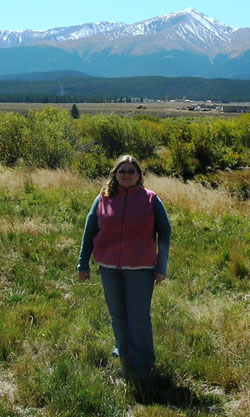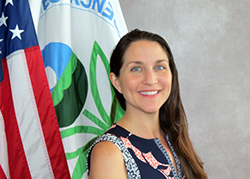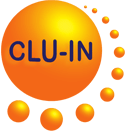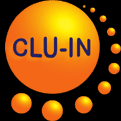Mining Webinar Series: Successful Implementation of Biologically-Based Passive Remediation Systems
Sponsored by: U.S. EPA, Office of Superfund Remediation and Technology Innovation, Technology Innovation and Field Services Division
Archived: Tuesday, May 1, 2018
Mining Webinar Series: Successful Implementation of Biologically-Based Passive Remediation Systems
2018-05-01
U.S. EPA, Office of Superfund Remediation and Technology Innovation, Technology Innovation and Field Services Division
Metal mines at their end of active operations must prepare for the potential long-term treatment of mining-influenced water (MIW). This webinar will highlight how biologically-based passive remediation technologies have been shown to be a cost-effective option for treating MIW, especially mildly- to moderately-impacted waters at low- to moderate-flow rates such as may be found at remote or closed mine sites. Presenters will share an overview of biologically-based passive remediation technologies, their applicability to mining site conditions and illustrate the remedial design and evaluation process with a current treatability study example. In addition, two case study examples of mining sites with operating biologically-based passive treatment systems will be presented: Iron King Mine near Jerome, Arizona, and Garfield Mine near Delta, Colorado.
Mining Webinar Series Archives
- ITRC: Reuse of Solid Mining Waste (May 29, 2025)
- ITRC: Reuse of Solid Mining Waste (Feb 13, 2025)
- Toward Sustainability of Passive Treatment in Legacy Mining Watersheds: Operational Performance and System Maintenance (Feb 16, 2022)
- Ehrenfeld AML Pilot Reclamation/Recreation & Watershed Improvement Project (Dec 1, 2021)
- Ecosystem Services - Benefits and Considerations for the Cleanup of Contaminated Mine Sites (Sep 21, 2021)
- Mining Webinar Series: Assessment and Rehabilitation of Humid Region Mine Sites and Wastes (May 18, 2021)
- Mining Webinar Series: Evaluation of Rotating Cylinder Treatment System™ at Elizabeth Mine, Vermont (Mar 16, 2021)
- Revegetation of Mine Wastes in Arid Environments: Linking Above- and Below-Ground Performance (Aug 12, 2020)
- Mining Webinar Series: Eagle Mine Superfund Site Case Study (Jan 21, 2020)
- Considerations for Bulkheading Draining Mine Tunnels (Oct 25, 2019)
- EPA Office of Research and Development's Office of Science Policy Mine and Mineral Processing Virtual Workshop Session 4 - Big Data (Oct 23, 2019)
- EPA Office of Research and Development's Office of Science Policy Mine and Mineral Processing Virtual Workshop Session 3 - Innovative Technologies and Strategies (Oct 16, 2019)
- EPA Office of Research and Development's Office of Science Policy Mine and Mineral Processing Virtual Workshop Session 2 - Emergency Management (Oct 9, 2019)
- EPA Office of Research and Development's Office of Science Policy Mine and Mineral Processing Virtual Workshop Session 1 - Site Characterization (Oct 2, 2019)
- Long-Term Performance of Biochemical Reactors for Passive Treatment of Mine-Impacted Water (Apr 23, 2019)
- Mining Webinar Series: Successful Implementation of Biologically-Based Passive Remediation Systems (May 1, 2018)
- Mining Webinar Series: Ecological Revitalization at the Henry's Knob Former Mining Site (Mar 6, 2018)
- Matching Biochar Characteristics with Metals-Contaminated Soils to Effectively Reduce Metal Bioavailability at Mining Sites (Nov 7, 2017)
- Overview, Lessons Learned and Best Practices Derived from Independent Optimization Reviews of Superfund Mining Sites (May 24, 2017)
- Passive Treatment of Mining-Influenced Water: From Bench Scale to O&M (Nov 14, 2016)
- NEPA and Mining 101, Part 3: Regulatory Process & How the Public and Tribes can Engage (Jun 8, 2016)
- NEPA and Mining 101, Part 2: Mining Environmental Concerns and Issues (May 24, 2016)
- NEPA and Mining 101, Part 1: Mining Fundamentals (May 12, 2016)
- Identifying the Potential for Methylation of Mercury at Mining Sites (Mar 29, 2016)
- Screening, Testing, and Application of Residuals and Byproducts for Remediation (Dec 2, 2015)
- Remedial Action, Remedy Performance, and Long-Term Land Management at the Anaconda Smelter NPL site (Jun 4, 2015)
- Mine Tailings Fundamentals: Current Technology and Practice for Mine Tailings Facilities Operations and Closure (May 20, 2015)
- Mine Tailings Fundamentals: Current Technology and Practice for Mine Tailings Facilities Operations and Closure (May 19, 2015)
- Water Treatment: Iron Mountain Mine and Bunker Hill Mining and Metallurgical Complex Superfund Sites (Dec 17, 2014)
- Mining Remediation and Sustainability (Nov 17, 2014)
- Using Biosolids and Coal Combustion Products for Soil Remediation at Mining Sites (Jul 24, 2014)
- Soil Amendment Applications and Mine Site Restoration Impacts on Soil Ecosystem Services (May 7, 2014)
- Mining Site Metals: Exposure Pathways and Bio-Assays (Sep 3, 2013)
- NARPM Presents...Ecological Revitalization Using Natural Materials (May 14, 2013)
- Mining-Influenced Water: Treatment Technologies (Feb 6, 2013)
- Mining-Influenced Water: Environmental Issues, Remediation Research, and Tools for Estimating Remediation Cost (Sep 19, 2012)
- Technology Transfer and Training Resources for Mining Sites (Jun 13, 2012)
- Innovative Approaches to Mining Site Remediation and Reuse Workshop (Oct 6, 2011)
Accessibility, Recording, and Content Disclaimer
Rehabilitation Act Notice for Reasonable Accommodation
It is EPA's policy to make reasonable accommodation to persons with disabilities wishing to participate in the agency's programs and activities, pursuant to the Rehabilitation Act of 1973, 29 U.S.C. 791. Any request for accommodation should be made to Michele Mahoney at 703-603-9057 or mahoney.michele@epa.gov, preferably one week or more in advance of the webinar, so that EPA will have sufficient time to process the request. EPA would welcome specific recommendations from requestors specifying the nature or type of accommodation needed. Please note that CLU-IN provides both alternate phone call-in options and closed captioning for all webinars, and requests for these specific accommodations are not necessary.
Webinar Recording
By participating in this CLU-IN webinar, you automatically agree to authorize recording of audio and visual content presented during this live event and consent to subsequent use of this recording in the public domain by the U.S. Environmental Protection Agency. This recording may include questions, comments and poll responses provided by you during the live event in addition to your name, voice, image or likeness. This recording will be made available after the conclusion of the live event as part of the CLU-IN webinar archives, and will remain available indefinitely. If you do not wish to consent to the recording, please do not join the live event, and contact Jean Balent at 202-566-0832 or balent.jean@epa.gov to discuss your concerns.
Content Disclaimer
This webinar is intended solely to provide information to the public. The views and opinions expressed as part of this webinar do not necessarily state or reflect those of the U.S. Environmental Protection Agency. It is not intended, nor can it be relied upon, to create any rights enforceable by any party in litigation with the United States, or to endorse the use of products or services provided by specific vendors. With respect to this webinar, neither the United States Government nor any of their employees, makes any warranty, express or implied, including the warranties of merchantability and fitness for a particular purpose, or assumes any legal liability or responsibility for the accuracy, completeness, or usefulness of any information, apparatus, product, or process disclosed, or represents that its use would not infringe privately owned rights.
Presenters:
 Michele Mahoney, U.S. EPA Technology Innovation and Field Services Division (mahoney.michele@epa.gov or 703-603-9057)
Michele Mahoney, U.S. EPA Technology Innovation and Field Services Division (mahoney.michele@epa.gov or 703-603-9057)
Michele Mahoney is a Soil Scientist working on issues related to remediation and reuse of contaminated sites within EPA's Superfund program. In order to support practitioners, she researches and reports on knowledge related to treatment technologies for mining sites, use of soil amendments for remediation and redevelopment/reuse, ecological revitalization, ecosystem services, phytotechnologies, and urban gardening. Michele develops and delivers training for the world-renown EPA Clean-Up Information Network (www.cluin.org), particularly a Mining Webinar Series, and topics related to Superfund Redevelopment, Ecological Revitalization, Ecosystem Services, and Phytotechnologies. She also creates and manages content development for the EcoTools and Mining pages on CLU-IN.org.
Michele has worked with EPA for over 20 years. Prior to her current responsibilities, Michele served the Agency as the lead for food waste composting issues and as an environmental fate and ecological risk assessor for pesticide registration. Michele also has experience as a Contractor for EPA and a Laboratory and Field Researcher.
Michele earned a M.S. in Soil Science from the Washington State University, and a B.S. in Agronomy & Environmental Science from Delaware Valley University.
Roger Hoogerheide, EPA Region 8 (hoogerheide.roger@epa.gov or 406-457-5031)
Roger Hoogerheide is a Remedial Project Manager for the U.S. Environmental Protection Agency. Roger has a MeS in environmental sciences and has worked for EPA for over 20 years in the Washington DC, Denver CO, and Helena MT offices. Roger currently oversees the remediation of six Superfund Sites in Montana including two lead and zinc mining districts in the Little Belt Mountains.
Erick Weiland, Freeport-McMoRan
An internationally respected geochemist with over forty years of professional experience and technical knowledge spanning multiple disciplines, Mr. Weiland has successfully completed projects across many countries through the applied use of sound geochemical principals, methods, and interpretation.
Mr. Weiland provides geochemical support to, and management of, engineering and environmental projects including:
- Design, implementation, and evaluation of field and laboratory investigations related to geochemical processes in the surface and sub-surface environments
- Fate and transport analysis of metals and non-metals within the natural environment
- Assessing acid generation potential (acid rock drainage) with associated leaching of hazardous constituents from natural materials
- Computer modeling of anthropogenic systems in natural environments using geochemical, hydrogeological, and contamination processes and attributes
- Water quality investigations in both the surface and sub-surface environments
- Evaluations of recharge systems for wastewater and surface water storage and retrieval
- Attaining and maintaining compliance with federal and state regulations and permits including RCRA, NPDES, APP, and others
- CERCLA emergency clean-up actions
- Remediation and compliance investigations for metals and non-metals in soils
- Engineering and design of water treatment systems, stockpiles, and tailings dams
- Laboratory operations & management
- Mine remediation, reclamation, and closure planning and implementation
Moderator:
 Jean Balent, U.S. EPA Technology Innovation and Field Services Division (balent.jean@epa.gov or 202-566-0832)
Jean Balent, U.S. EPA Technology Innovation and Field Services Division (balent.jean@epa.gov or 202-566-0832)
Ms Balent is on the staff of the EPA's Technology Innovation and Field Services Division where she has worked to collect and disseminate hazardous waste remediation and characterization information since 2003. Ms Balent manages the Clean Up Information Network website and actively supports online communication and collaboration resources available to EPA. She formerly worked with the US Army Corps of Engineers Environmental Engineering Division in the Buffalo District. Ms Balent was also a member of the SUNY-Buffalo Groundwater Research Group where she constructed and tested large scale models of groundwater flow. Ms Balent has also conducted research relating to the Great Lakes, environmental remediation, and brownfields re-development. She holds a Bachelor's degree in environmental engineering from SUNY-Buffalo and a Master's degree in Information Technology from AIU.
Webinar Slides and References:
Webinar Slides and References:
-
 Slide Presentation for Michele Mahoney, U.S. EPA Technology Innovation and Field Services Division (714KB/PDF)
Slide Presentation for Michele Mahoney, U.S. EPA Technology Innovation and Field Services Division (714KB/PDF)
-
 Slide Presentation for Roger Hoogerheide, EPA Region 8 (6.58MB/PDF)
Slide Presentation for Roger Hoogerheide, EPA Region 8 (6.58MB/PDF)
-
 Slide Presentation for Erick Weiland, Freeport-McMoRan (3.88MB/PDF)
Slide Presentation for Erick Weiland, Freeport-McMoRan (3.88MB/PDF)
Additional Resources:
- These materials will be available by Tuesday, May 1, 2018
If you have a suggested topic or idea for a future CLU-IN internet seminar, please contact:
Technology Integration and Information Branch
PH: 202-566-0832 | Email: balent.jean@epa.gov
Technology Integration and Information Branch
PH: 202-566-0875 | Email: adam.michael@epa.gov





